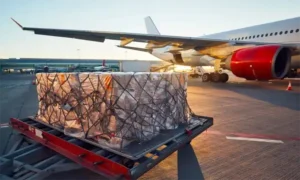Hey there! Let’s chat about the Notification to Captain, or NOTOC for short. It’s basically a heads-up document for pilots, telling them about any dangerous goods or special cargo on their flight. This could be anything from hazardous materials to live animals or even human remains. Interesting stuff, right?
So, here’s a question that came up: “Some NOTOC formats include an emergency response code, while others don’t. Does the current IATA DGR Book Ed.63 recommend this, or is the UN number enough?” This got me thinking about why NOTOCs are so crucial, especially when dealing with dangerous goods incidents during flights. Let’s dive in!
Who’s responsible for this? Well, according to ICAO Annex 18 and ICAO Technical Instructions Doc 9284, it’s the aircraft operator’s job to give the pilot-in-command accurate written info. This isn’t just paperwork – it’s vital for handling the cargo safely. The pilot needs to acknowledge they’ve received this info by signing a copy, and they’ve got to keep a readable version handy during the flight.
Now, what exactly goes into a NOTOC? It’s quite a list:
- Flight date
- Air waybill number (if there is one)
- Proper shipping name and UN/ID number
- Class or division, subsidiary risk(s), and packing group
- Quantity info for both non-radioactive and radioactive materials
- Destination airport and where it’s loaded
- Whether it’s cargo aircraft only (CAO)
- Signatures from loading personnel and the captain
- Any state exemption declarations
- Emergency Response Drill code
- And any other remarks
Let’s tackle that question about the emergency response code. According to IATA DGR Book Ed.63 (Section 4, 4.1.6.14), the ERG Code in table 4.2 is indeed the Emergency Response Drill Code for dangerous goods incidents. And yep, IATA recommends including this ERG Code in the NOTOC. It’s an alphanumeric code that suggests how to respond to specific dangerous goods incidents.
So, why is the NOTOC so important? It serves two main purposes:
- It helps with emergency response drills. If something goes wrong, like a fire in the cargo hold, the crew needs this info to get the right Emergency Response Guide (ERG) Code. Let’s say there’s a fire involving UN 1088 Acetal. The captain would look up the emergency response code (3H) on the NOTOC, then check the Emergency Response Guidance for Aircraft Incidents Involving Dangerous Goods (ICAO Doc.9481-An/928) for the specific drill instructions.
- It’s crucial for communicating with air traffic control. If there’s an in-flight emergency, the pilot-in-command needs to let air traffic services know about any dangerous goods on board as soon as they can.
And it’s not just about the flight crew. The Air Traffic Services unit will pass this info to the senior Rescue and Firefighting (RFF) personnel. They’ll use the NOTOC details to prepare their emergency response based on the dangerous goods emergency response guide.
To wrap it up, the NOTOC is like a key that unlocks all the important info about dangerous goods on a flight. It helps the flight crew know exactly what steps to take in an emergency, based on the specific dangerous goods they’re carrying. Pretty important stuff when you think about it!
